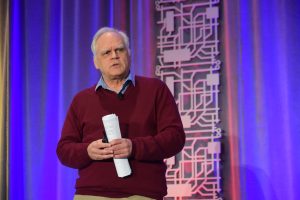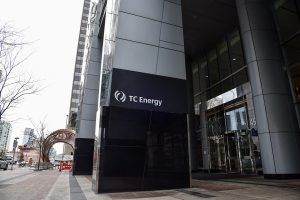In a Construct Canada seminar on how to minimize the seemingly conflicting goals of historic preservation and energy efficiency, the speaker said buildings are somewhat like humans.
"What does a house want? It wants to be dry and it wants to be seen," said Floris Keverling Buisman, chief executive officer and technical director of 475 High Performance Building, a New York-based consultant and supplier of high performance building materials.
That was just one of the points he emphasized during his 45-minute High Performance Historic Masonry Retrofits talk on strategies to make historic buildings energy efficiency without compromising their heritage characteristics.
"Preservation concerns and aesthetics often prevent exterior insulation. Therefore the only option to make these buildings energy efficient is to insulate them on the interior."
But that is not an easy task and one which requires a full examination of factors such as moisture, rain water and the type of insulation materials to avoid freeze-thaw cycles, he cautioned.
"The early architects were very smart, they kept buildings dry," said Keverling Buisman, explaining that shedding water off the face of buildings is crucial and can be attained with properly functioning drainage and gutters and repairing and/or replacing damaged cornices, sills, flashing and drip edges.
"Look at a building after it rains. For those interested in high performance masonry retrofits, learning to test (the porosity) of brick with Karsten tubes is essential."
Damaged brick should be replaced or repointed as soon as possible to make them both wind and airtight. Describing Portland cement as "the enemy of historic brick," he said contractors should always use mortar that is softer than brick.
The audience members were also advised not to take on retrofits of buildings with brick foundations, as they wick moisture. "If you see a brick foundation, be very afraid."
After moisture infiltration, the greatest threat to a building is air leakage. A continuous airtight control is required and can be attained with membranes, tapes and gaskets. Air control is actually more important than thermal control, he said.
In a slide presentation called Why Inboard is Better, the speaker highlighted the advantages of these insulating and air sealing elements, such as better protection against condensation and the ability to more easily detect and repair leaks. In explaining why they are necessary to keep the occupants of the building comfortable he made another comparison with humans.
"You may put on a wool sweater to keep warm. But when you go to the beach it’s not enough. You have to put on a windbreaker."
Drywall is "a sacrificial layer" with limitations which range from too many junctions at floors and walls, numerous holes for plumbing pipes and isn’t continuous with insulation at floor and room partitions.
"Consider an insulation that helps drying," said Buisman, specifically recommending cellulose because of its ability to ‘engage’ and buffer moisture infiltration.






Recent Comments
comments for this post are closed